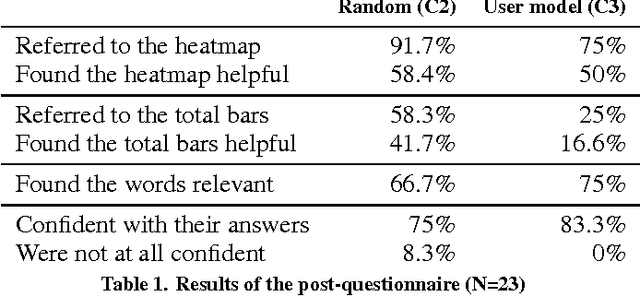Giulio Jacucci
Interactive Elicitation of Knowledge on Feature Relevance Improves Predictions in Small Data Sets
Jan 16, 2017



Abstract:Providing accurate predictions is challenging for machine learning algorithms when the number of features is larger than the number of samples in the data. Prior knowledge can improve machine learning models by indicating relevant variables and parameter values. Yet, this prior knowledge is often tacit and only available from domain experts. We present a novel approach that uses interactive visualization to elicit the tacit prior knowledge and uses it to improve the accuracy of prediction models. The main component of our approach is a user model that models the domain expert's knowledge of the relevance of different features for a prediction task. In particular, based on the expert's earlier input, the user model guides the selection of the features on which to elicit user's knowledge next. The results of a controlled user study show that the user model significantly improves prior knowledge elicitation and prediction accuracy, when predicting the relative citation counts of scientific documents in a specific domain.
Natural brain-information interfaces: Recommending information by relevance inferred from human brain signals
Jul 12, 2016



Abstract:Finding relevant information from large document collections such as the World Wide Web is a common task in our daily lives. Estimation of a user's interest or search intention is necessary to recommend and retrieve relevant information from these collections. We introduce a brain-information interface used for recommending information by relevance inferred directly from brain signals. In experiments, participants were asked to read Wikipedia documents about a selection of topics while their EEG was recorded. Based on the prediction of word relevance, the individual's search intent was modeled and successfully used for retrieving new, relevant documents from the whole English Wikipedia corpus. The results show that the users' interests towards digital content can be modeled from the brain signals evoked by reading. The introduced brain-relevance paradigm enables the recommendation of information without any explicit user interaction, and may be applied across diverse information-intensive applications.
 Add to Chrome
Add to Chrome Add to Firefox
Add to Firefox Add to Edge
Add to Edge